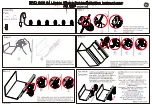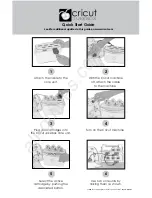
5.1 Rescue-Send Mode (Rescue-SEND)
The rescue send mode is used by all rescuers who
are involved in the rescue operation, but do not per-
form a transceiver search themselves (shovelers,
probe line, surface search, search with other search
devices etc.). The rescue send mode monitors the
motions of the rescuer and only activates the trans-
mitter, when the activity level of the rescuer is
during 4 minutes on such a low level that it has be
to be assumed that this is an involuntary state of
inactivity caused by a secondary avalanche.
Prior to reverting, the device will sound an audible
alarm. Reverting can be avoided if either of the
keys is pressed within 30 seconds of the alarm.
To activate the rescue send mode, switch the devi-
ce to SEARCH and revert to SEND. Wait until the 5
sec. count-down has completed, “Rescue-SEND” is
now shown at the bottom of the screen. As soon as
you hear 3 ascending beep-sounds, immediately
press any key. The activation of the rescue send
mode is confirmed by 3 descending beep sounds
and the double flashing of the red SEND-Control
LED. If you switch between SEND and SEARCH
during the further rescue operation, the device
always used the rescue send mode when the main
switch is in the SEND position. Turn the device off
and on to return back to the normal send mode.
In the «Cockpit Rescue-SEND» you find a step-by-
step setup guide.
32
S E N D M O D E
33
5. SEND Mode
The SEND mode is the normal operating mode out-
doors or in all other situations in which there is a
risk of avalanches.
Each time the SEND mode has been activated, this
is confirmed by a triple beep sound.
Each individual signal pulse is tested. If the test is
successful, this is confirmed by a blink of the red
SEND-Control LED.
The LCD display is automatically deactivated in the
SEND mode, but can be activated any time by pres-
sing either of the keys.
In case of a burial (or whenever the transceiver
stops moving), the device records the burial dura-
tion and detects vital data. These are displayed on
the buried device and transmitted via W-Link to all
other transceivers capable of receiving vital data.
See chapter «Burial and Vital Duration».
















































